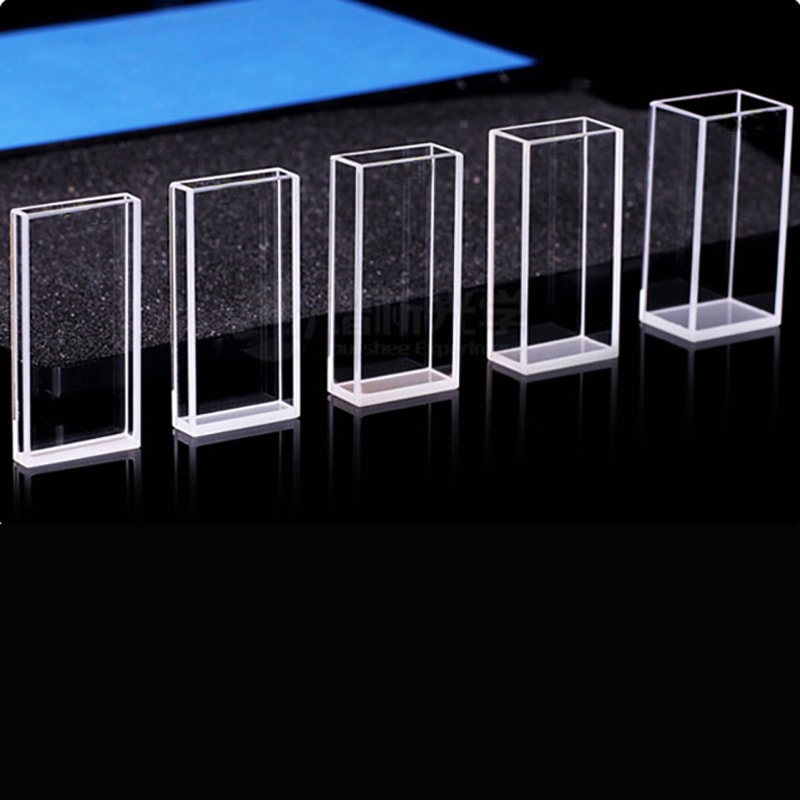The spectrotometry technique is the cornerstone of discovery and scientific advancement and a technique that reveals the secrets of light absorbance and transmittance in particular wavelengths. Its core is the cuvette, which is a small but vital vessel that houses samples to be analysed. These small containers might seem simple, but their design intricacies, from cuvette path length to material choice, hold the key to unlocking accurate data on substance concentration and purity. Let’s explore this fascinating universe where cuvette size and dimensions shape the outcome of every test.

Image credit: cuvet.co
Power of Cuvette Path length
Imagine a light beam passing through an object. The outcome is determined by the length of the path in the cuvette. This is the amount of light travels through the liquid. For many labs, a cuvette with 1 cm length is ideal as it provides the right balance between sensitivity as well as practicality. Why is this important? The longer the pathway, the more light is absorbed which amplifies the signal for small samples. However, for concentrated solutions such as nucleic acids and proteins, shortening the length of the path can be a game changer. This helps reduce dilution and protect valuable samples while reducing preparation time. What is the takeaway? It’s an art to ensure that the length of a path is in line with specifications for the sample. This increases accuracy.
Cuvette Dimensions and Sizes More than meets the Eye
The cuvette’s size is not just the amount of liquid can be held and how it works with the instrument. Each container is made to perform an exact task and comes in a range of shapes and sizes. Semi-micro cuvettes have smaller sizes, but thicker walls. They are suitable for tiny sample sizes. The walls that are thicker reduce the space inside and allow light to pass without wasting any drops. This is a huge improvement over a conventional cuvette. It requires smaller steps to pipette, allows for fewer errors and produces results that are solid. This is a clever tweak that proves size isn’t only an arbitrary number, but an important factor to consider.
The 1cm Path Length Cuvette: A Lab Favorite
What is the reason why the 1 cm cuvette’s path length is widely used in experiments? This is the perfect place for biological experiments where every milliliter counts. This standard design offers consistent results of absorbance, without overburdening the detector. It is ideal for everything, including DNA purity tests to enzyme tests. This is not a hero for all scenarios. If you switch it out for a cuvette that has a different geometry or path length, like the one used for emission studies, the results can be very different. Precision is dependent on choosing the correct instrument and not just the one that is most familiar. A tool that isn’t matched is comparable to a cuvette that isn’t right for the job.
Material Matters: More than Size and Path
Cuvette dimensions are only half of the tale. The choice of material is the last piece. High transmission rates of quartz and glass cuvettes permit light to move through them without interference. They’re durable and can be reused. This makes them perfect for spectroscopy. On the other hand plastic cuvettes provide affordability and ease of use. There’s no need for cleaning or cross-contamination. Simply use the cuvettes and discard. For aqueous solutions and quick DNA and RNA tests they’re hard to beat. The downside? Inaccurate at certain wavelengths. This is a classic example of intent dictating preference for quartz for purists, plastic for the pragmatic.
Perfect Practice and Precision
Cuvettes are flexible and adaptable. Spacers in combination with short lengths of paths allows the handling of samples that are concentrated while larger vessels can take on large quantities. Every choice of size and length as well as the type of material has an impact on the research. This may impact how clear the final result is. Consider a lab that is looking at a protein. A semimicro cuvette has shorter pathways, which reduces the need for dilution and produces reliable data more quickly. Contrast that with a sloppy swap of cuvettes mid-experiment, and the numbers falter. This is a reminder that the smallest of small details can have a huge impact on spectrophotometry.
Cuvettes aren’t huge, but their impact is immense. These vessels, which range from 1 cm cuvette’s length, to custom dimensions are able to bridge the gap between your sample and the insights. The right cuvette can transform the quality of a measurement, whether you’re looking for concentration or purity or both, into an excellent measurement.